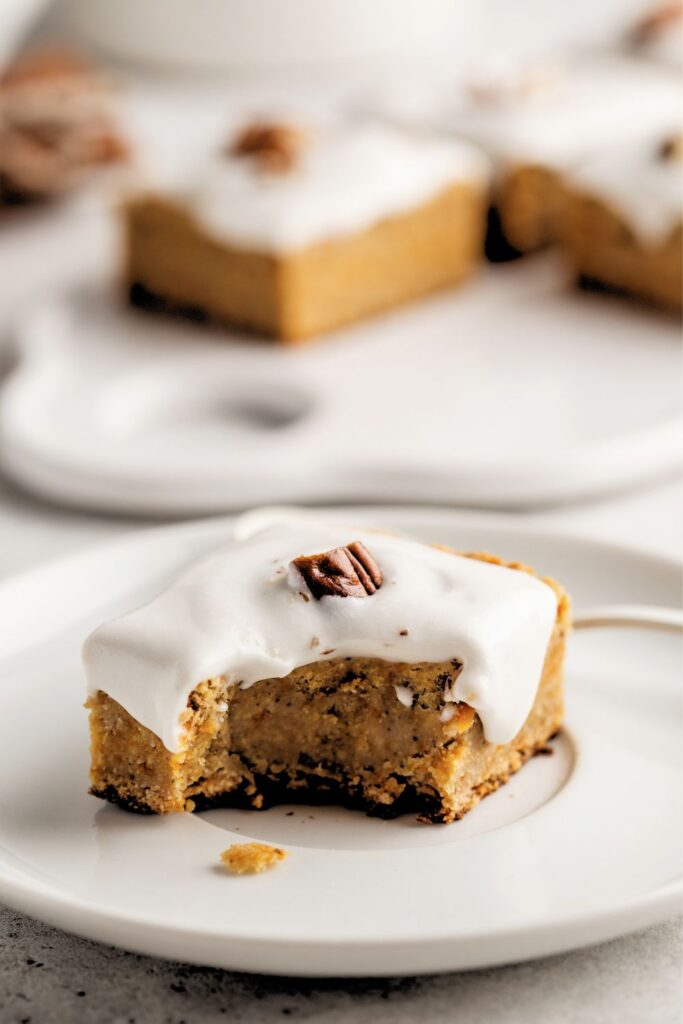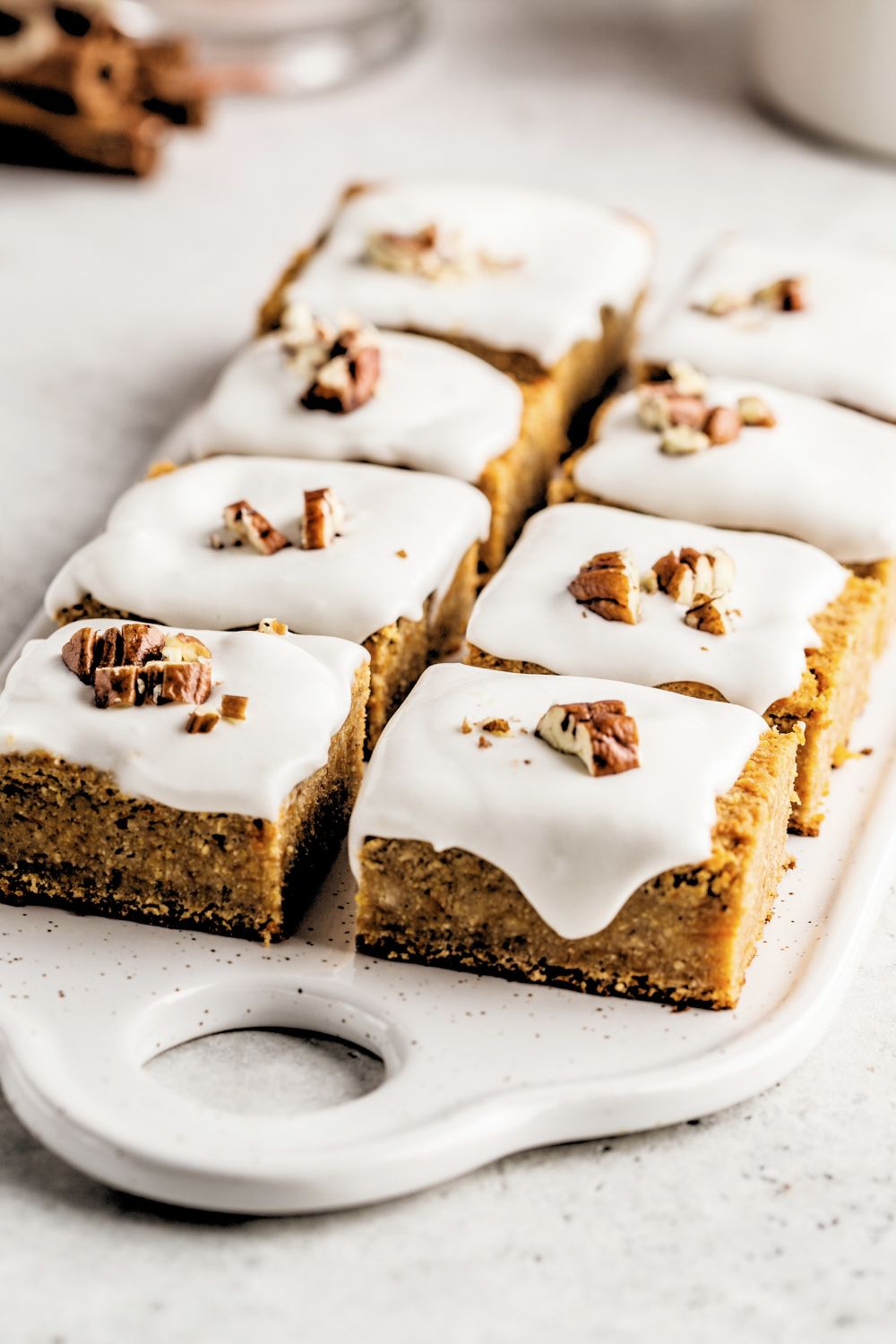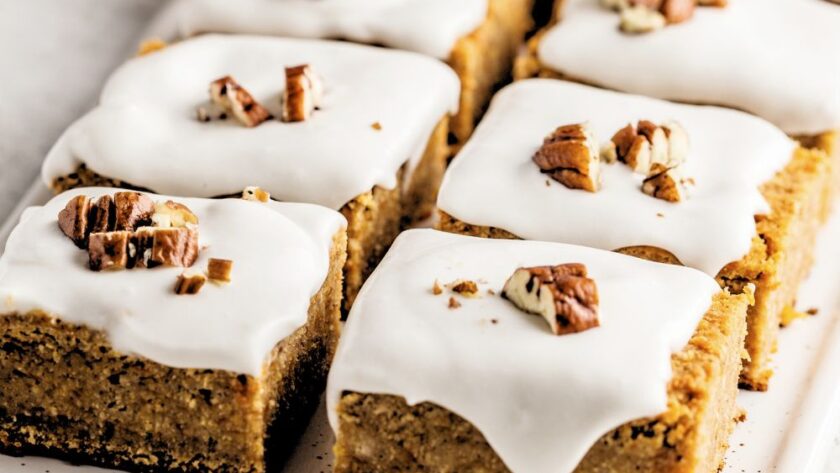The first bite reminded me of a gingerbread I had years ago at a little café in Edinburgh—moist, deeply spiced, and unexpectedly bright with citrus. I tried to recreate it from memory once, but mine came out heavy, a little flat. It didn’t have that Ina finish.
Then I found this version—and made a few quiet changes. I soaked the raisins a little longer, switched to a richer butter, and warmed the glaze before pouring.
That’s when the whole thing came alive.
What Surprised Me Most (In a Good Way)
This isn’t a gingerbread meant to be built into houses. It’s soft and fragrant, almost pudding-like around the edges. What makes it work is restraint—just enough spice, not too sweet, and the unexpected elegance of orange zest and crystallized ginger. The rum-soaked raisins? They don’t shout. They whisper.
My Ingredient Notes
- Dark rum (or water) – I’ve done both. Rum deepens the flavor, but water works if you’re serving kids or just prefer a simpler taste. Either way, soak the raisins. It makes a difference.
- Golden raisins – Don’t skip. They puff up and melt slightly into the cake, giving it an old-fashioned warmth.
- Unsalted butter – I use the European-style kind (like Plugrá) for a richer crumb. It matters here.
- Unsulphured molasses – This is key. Regular molasses can taste harsh. Unsulphured is smoother, rounder, and just right.
- Sour cream – Makes the cake tender. I’ve tried yogurt—it works, but not quite the same tang.
- Orange zest – This isn’t just garnish. It lifts everything. Fresh is non-negotiable.
- Crystallized ginger – Adds chewy heat in bites. I once used fresh ginger instead—it overwhelmed the balance.
Swaps That Actually Worked
- Greek yogurt instead of sour cream – Works in a pinch, but use full-fat. Anything less made the crumb too dry.
- Chopped dried apricots instead of raisins – Subtle and bright. Lovely in spring.
- Spelt flour for 1 cup of the AP – Added a nutty note without changing the texture much.
Fixes That Mattered
| What Went Wrong | Why It Happens | How to Fix It |
|---|---|---|
| Cake sank in the middle | Batter too warm when sour cream was added | Let molasses-butter mixture cool for a solid 5 min |
| Glaze soaked into cake | Didn’t let it cool fully before glazing | Wait. The whole top should feel cool to the touch |
| Tough edges | Overbaked or used a metal pan without parchment | Use parchment and check at 30 min with a toothpick |
How to Make Ina Garten’s Gingerbread Cake
- Prep your pan: 8×8-inch square, greased and lined with parchment. Don’t skip the parchment—it makes removal simple and clean.
- Soak the raisins: Simmer the raisins and rum (or water) in a small saucepan. Once it hits a boil, turn off the heat and let them steep. This softens them and draws out sweetness.
- Make the molasses base: In a second saucepan, bring molasses and butter just to a boil—then immediately pour it into your mixing bowl. Let it cool 5 minutes, no less. If it’s too hot, it curdles the sour cream.
- Mix in the dairy and zest: Blend in the sour cream and orange zest once cool. It should look glossy and thick.
- Combine dry ingredients: Whisk flour, spices, salt, and baking soda. Mixing with your hands helps break up clumps, especially with cloves.
- Bring it all together: Slowly mix dry into wet, low speed. Batter will be thick and sticky. Gently fold in the soaked raisins and minced crystallized ginger.
- Bake: Pour into the prepared pan, smooth the top, and bake at 350°F for about 35 minutes. A toothpick should come out just clean—moist crumbs are good.
- Cool completely: This is critical. Warm cake + glaze = soggy topping.
- Glaze: Mix confectioners’ sugar and orange juice until pourable. Drizzle over the cooled cake and let it drip. The citrus scent should bloom right away.

Tiny Habits, Better Results
- I zest directly into the bowl—those oils that spray out? That’s flavor you want in the batter, not stuck on your microplane.
- I warm the orange juice slightly before making the glaze. It dissolves the sugar better and sets more evenly.
- Don’t cut the cake until the glaze is fully set. I usually wait 30 minutes.
Next-Day Tips
- Room temp: Keeps well under a dome or wrapped loosely for 3–4 days.
- Fridge: Fine for up to a week, but let it come to room temp before serving—or warm it slightly to bring back softness.
- Freezer: Freeze in squares, unglazed. Thaw, then glaze fresh.
- Serving ideas: I love it with a dollop of mascarpone or spiced whipped cream. Also shockingly good with lemon curd.
Quick Questions, Real Answers
Q: Can I skip the glaze?
A: You can, but the orange glaze is what ties it all together. It adds lift to the deep molasses base.
Q: Is this spicy?
A: It’s warmly spiced, not hot. The crystallized ginger adds a little tingle, but it’s balanced.
Q: Can I double the recipe?
A: Yes—use a 9×13 pan, and check the center after 40 minutes.
Q: Is it okay to use blackstrap molasses?
A: I wouldn’t. It’s too bitter and overpowering for this delicate balance.
Try More Recipes:

Ina Garten Gingerbread Cake
Description
Moist, warmly spiced gingerbread with orange glaze and rum-soaked raisins—classic Ina with just the right cozy twist.
Ingredients
Instructions
- Preheat oven to 350°F. Line and grease an 8×8-inch pan.
- Simmer raisins and rum (or water). Set aside.
- Melt molasses and butter in saucepan until just boiling. Pour into mixer bowl. Cool 5 min.
- Mix in sour cream and zest.
- In separate bowl, whisk dry ingredients.
- Slowly mix dry into wet until smooth. Fold in raisins and crystallized ginger.
- Pour into pan. Bake 35 minutes. Cool completely.
- Mix orange juice and sugar. Drizzle glaze over cake. Let set before slicing.

